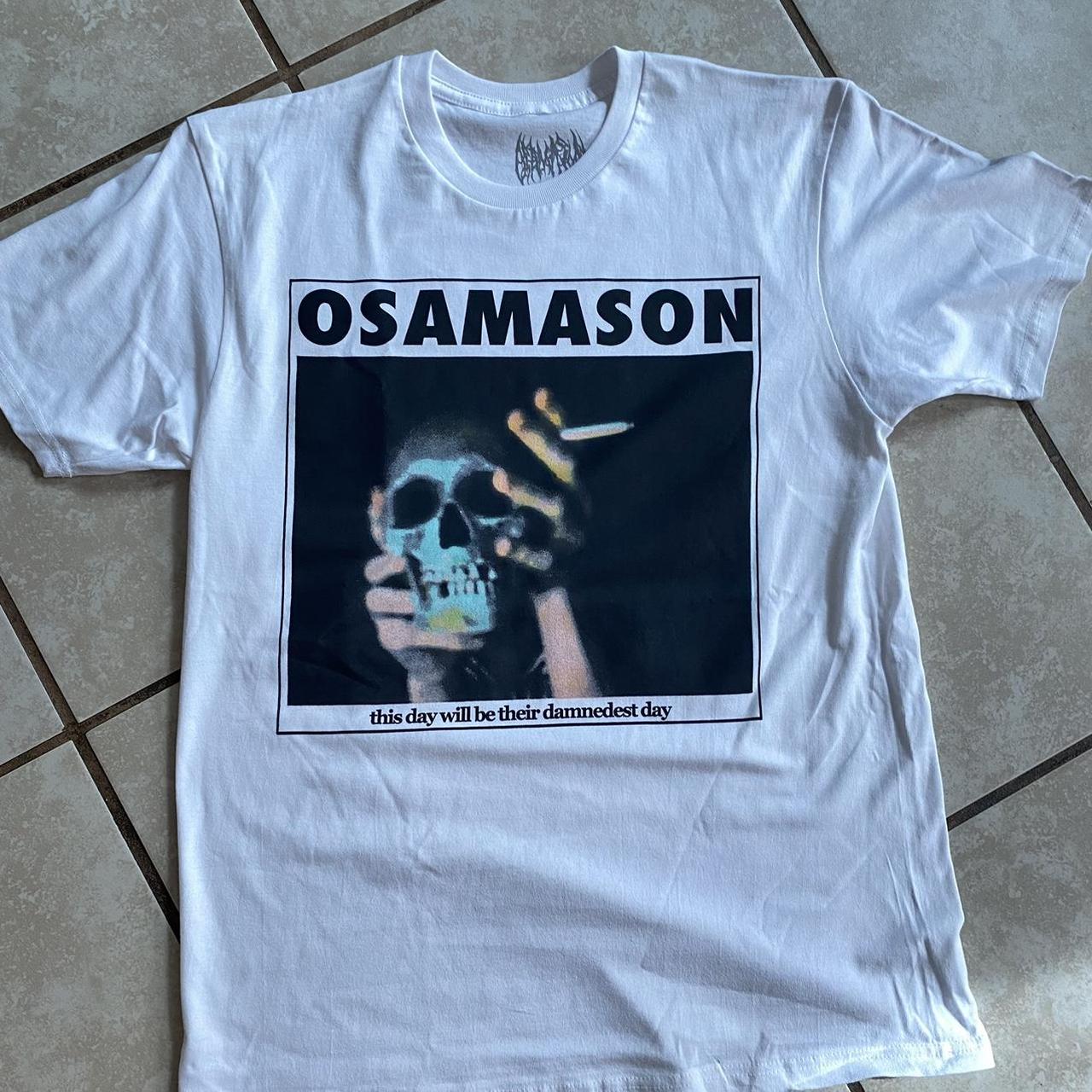Is the allure of artist merchandise more than just a fleeting trend? The booming market for everything from hoodies to posters suggests a deeper connection between fans and their idols, transforming fandom into a tangible expression of identity. This exploration delves into the world of Osamason merch, examining its quality, availability, and the evolving landscape of artist-fan engagement in the digital age.
Navigating the online marketplace can be a mixed bag, as one fan recently discovered. Their highly anticipated Osamason merch arrived with a notable omission: the "Flex MusiX" branding and decorative strings featured prominently in the online product photos were absent. While the overall quality impressed, this discrepancy highlights the challenges of online shopping, where expectations don't always align with reality. This experience also underscores the importance of clear and accurate product descriptions, a crucial element for building consumer trust and ensuring satisfaction. The incident raises questions about quality control in the rapidly expanding world of artist merchandise, particularly within the fast-paced realm of online retail.
| Real Name | Osamason |
| Profession | Recording Artist, Record Producer |
| Origin | South Carolina, USA |
| Label | Atlantic Records |
| Website | Atlantic Records Website (Note: A specific Osamason website was not readily available; this link provides context for his record label affiliation.) |
The price point of some items, such as the "TFF" and "Flex Fantasies" hoodies retailing at $150, further complicates the conversation surrounding artist merchandise. While dedicated fans may be willing to invest in high-priced items, the accessibility of such merchandise remains a concern for many. This pricing strategy raises questions about market segmentation and the balance between exclusivity and affordability. Are these prices justified by the quality and exclusivity of the items, or are they capitalizing on the intense loyalty of a dedicated fanbase?
The online Osamason community, with its thousands of subscribers across various platforms, serves as a testament to the artist's growing popularity. These digital spaces provide a forum for fans to connect, discuss their shared passion, and, of course, share their experiences with merchandise. From unboxing videos to discussions about sizing and quality, these online communities offer valuable insights into the consumer experience and provide a direct feedback loop for artists and their management teams. They also demonstrate the power of social media in shaping consumer behavior and driving demand for artist-related products.
The range of Osamason merchandise extends beyond apparel, encompassing posters, music, and even specially curated box sets like the "Jump Out" edition, which includes a hoodie and a physical CD. This diversification of merchandise allows fans to express their fandom in various ways, catering to different preferences and budgets. The inclusion of physical media, like the CD in the "Jump Out" box set, is a noteworthy aspect, acknowledging a segment of the fanbase that still values tangible music formats in an increasingly digital landscape.
The challenges of navigating international e-commerce are also apparent in the discussion of merchandise returns and their impact on artist royalties. The French text referencing return costs and their potential effect on reinvestment and innovation underscores the complexities of the global merchandise market. As online retail continues to transcend geographical boundaries, addressing these logistical and financial hurdles becomes increasingly crucial for artists and merchandisers seeking to maximize their reach and profitability. The comments about increasing return rates and their absorption by Merch by Amazon, potentially affecting artist royalties, highlight the intricate financial ecosystem of online merchandise sales.
The design process for merchandise also plays a significant role in the final product. The mention of different templates for the front and back of hoodies, due to varying artwork dimensions, highlights the technical considerations involved in producing high-quality merchandise. This attention to detail, while seemingly minor, demonstrates a commitment to aesthetic consistency and a recognition of the importance of visual appeal in attracting consumers. It also underscores the collaborative nature of merchandise creation, involving designers, artists, and manufacturers working together to bring a product to market.
The availability of Osamason merchandise across a broad spectrum of productsfrom t-shirts and hoodies to posters and more specialized itemsreflects a strategic approach to maximizing market penetration and catering to diverse fan preferences. The inclusion of kids' sizes further expands the target audience, fostering a sense of community and inclusivity within the fanbase.
Promoting artist merchandise effectively requires a multi-pronged approach. Platforms like Amazon Merch on Demand offer a streamlined process for artists to create and sell their merchandise, but the onus of promotion largely falls on the artist themselves. Leveraging social media, online communities, and even traditional marketing strategies are crucial for reaching potential buyers and driving sales. The ease of creating and listing products on platforms like Amazon Merch on Demand has democratized the merchandise landscape, but it also means artists face increased competition and must actively market their products to stand out. Understanding how to effectively target their audience and leverage different marketing channels is essential for success in this competitive environment.
The discussion surrounding royalties on platforms like Amazon Merch on Demand further emphasizes the financial intricacies of the merchandise industry. The royalty structure, varying based on product type and pricing, underscores the importance of careful planning and strategic decision-making for artists seeking to maximize their earnings. Understanding the nuances of these platforms and their respective royalty systems is crucial for artists navigating the complexities of online merchandise sales.
In conclusion, the world of Osamason merch, like the broader artist merchandise landscape, is a complex and dynamic ecosystem. It reflects the evolving relationship between artists and fans, where merchandise serves as a tangible link connecting the two. Navigating this landscape requires a keen understanding of quality control, pricing strategies, online communities, and the intricacies of online retail platforms. As the market continues to evolve, it will be interesting to see how artists and merchandisers adapt to meet the changing demands of a digitally connected fanbase.


